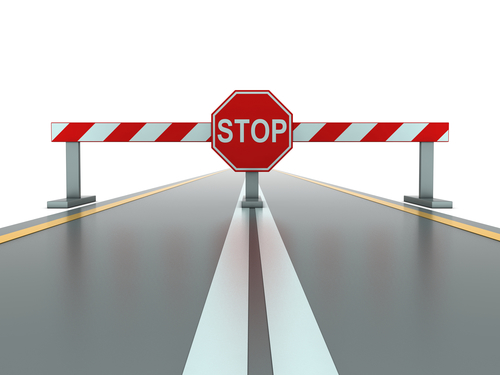 On September 10, 2018, the Federal Circuit issued its opinion in Acorda Therapeutics, Inc. v. Roxane Labs., Inc., No. 17-2078, over the fervent dissent of Judge Newman, expanding what has been called the “blocking patent” doctrine. If you haven’t heard of this doctrine, you probably will (hint: it has to do with obviousness and hindsight).
On September 10, 2018, the Federal Circuit issued its opinion in Acorda Therapeutics, Inc. v. Roxane Labs., Inc., No. 17-2078, over the fervent dissent of Judge Newman, expanding what has been called the “blocking patent” doctrine. If you haven’t heard of this doctrine, you probably will (hint: it has to do with obviousness and hindsight).
We all know that one cannot patent something that’s merely an obvious variation of existing technology. But it is well-understood that our perception of “obviousness” changes with the passage of time. Something that seems commonplace and unremarkable today may or may not have been a big leap 10 or 15 years ago when the invention was made, but how can we be sure? Most of us find it difficult to go back in time, and think about a problem the same way we would have thought about it back then, using only the information that was available at the time. Or perhaps you’ve had the experience of not being able to figure out how to solve a problem – maybe not even knowing you had one – and slapping your forehead once you were shown the solution (“Duh, that’s so obvious!”)
Hindsight bias, the phenomenon that things seem more predictable and obvious after they have occurred, is one of the most widely-studied “decision traps” in psychology. It is inherent in the way our minds deal with future and past. Today we may be faced with uncertain outcomes, unable to predict e.g. the result of the November election. But, as psychologists tell us once we know the answer to this current feeling of uncertainty, the current “not knowing,” will not only disappear, but it will also become oddly, uncannily difficult to remember.
Patent litigation plays right into such human limitations, which affect judges and jurors alike. Patents are often litigated many years after the invention was made, and very often those who are accused of patent infringement will argue that the invention was obvious at the time it was made and a patent was applied for. Judges and jurors are given large amounts of technical information about the invention, making it near-impossible for them to decide whether it would have been obvious to someone who hasn’t already been taught the claimed solution. No amount of jury instructions telling people to guard against hindsight seems to make a difference.
And we accept a surprising amount of other conjecture in this analysis. For example, judges and jurors are told about a contemporaneous hypothetical person that – despite having only ordinary skill in the relevant technology – would have had super-human knowledge of all then-existing technical information, was fluent in every language under the sun, and would have done insane things to access information sources [for example, a hypothetical pharmaceutical scientist would have – no kidding – searched the basement of the Securities Exchange Commission for hardcopy documents of public stock offerings, on the off-chance of finding tidbits of medical information not available in scientific journals]. This person would not only have known all that technical information, it would also have understood the implications of any one piece of information in the context of all others and creatively applied this knowledge to solve the same problem the inventor did.
One can doubt whether such a hypothetical person, more akin to an omniscient maniac than an ordinary engineer or scientist, is a very helpful construct for figuring out the obviousness of an invention many years after the fact. After all, technical problems can often be approached in many different ways, and this hypothetical person would have been aware of all of them (even if the actual inventor wasn’t). Of all the options that were open to that person, how could we ever reliably determine whether she or he would have taken just the same path the inventor took?
Maybe sometimes the better way to decide whether something was obvious is to look at what actually happened before and after the invention was introduced in the marketplace. If an invention was so obvious, why did others who tried to solve the same problem fail? Why did others identify a need for the invention, express frustration with existing products, but fail to propose better solutions? And after the invention was introduced, why was it met with immediate commercial success, displacing earlier products from the marketplace, and prompting attempts by others to copy it? Why did preexisting skepticism in the professional community change to surprise and acclaim once the invention was unveiled? Maybe such information goes to show that the invention couldn’t have been quite so obvious. If that sounds reasonable to you, meet the blocking patent doctrine.
The next installment of this discussion will focus on the somewhat mind boggling development of this doctrine and its application to the objective indicia of nonobviousness known as commercial success evidence. “Blocking patents” can be thought of as the revenge of the hindsight nerds. You see, not everybody is happy when their neat construct of what would have been easy and obvious to a hypothetical person collides with the reality of what real persons were grappling with at the time of the invention. “Blocking patents “ can be used as a tool to explain such pesky evidence away. We will then discuss the expansion of the doctrine and its consequent effect on other objective indicia of nonobviousness, concluding with some remarks on the negative policy implications of this judge-made doctrine.
Continue Reading: Expansion of the Blocking Patent Doctrine: Trading Logic for Gremlins.
Image Source: Deposit Photos

![[IPWatchdog Logo]](https://ipwatchdog.com/wp-content/themes/IPWatchdog%20-%202023/assets/images/temp/logo-small@2x.png)


![[Advertisement]](https://ipwatchdog.com/wp-content/uploads/2024/04/Artificial-Intelligence-2024-REPLAY-sidebar-700x500-corrected.jpg)
![[Advertisement]](https://ipwatchdog.com/wp-content/uploads/2024/04/Patent-Litigation-Masters-2024-sidebar-700x500-1.jpg)

![[Advertisement]](https://ipwatchdog.com/wp-content/uploads/2021/12/WEBINAR-336-x-280-px.png)
![[Advertisement]](https://ipwatchdog.com/wp-content/uploads/2021/12/2021-Patent-Practice-on-Demand-recorded-Feb-2021-336-x-280.jpg)
![[Advertisement]](https://ipwatchdog.com/wp-content/uploads/2021/12/Ad-4-The-Invent-Patent-System™.png)






Join the Discussion
7 comments so far.
Enlightened
October 13, 2018 01:26 pm@MarkMartens42
“All truth goes through three stages:
First it is ridiculed. Second it is violently opposed. And finally it is accepted,… as obvious.”
Very well said!!!
Mark Martens (@MarkMartens42)
October 13, 2018 12:01 amHans and Melissa, Arthur Schopenhauer said
All truth goes through three stages:
First it is ridiculed. Second it is violently opposed. And finally it is accepted,… as obvious.
B
October 12, 2018 01:28 pm“would have had super-human knowledge of all then-existing technical information, was fluent in every language under the sun, and would have done insane things to access information sources . . . .”
Which leave open the question whether CAFC judges would consider looking at a Nahuatl manuscript of a given dialect a valid exercise. Nahuatl is spoken by about a million people – most in central Mexico
B
October 12, 2018 01:12 pm“Maybe such information goes to show that the invention couldn’t have been quite so obvious. If that sounds reasonable to you, meet the blocking patent doctrine.”
It is my professional experience that judges believe that they are better expert witnesses than the expert witnesses, and more knowledgeable about the relevant technology than the inventors.
Judge Taranto is the master of patent mischief, and appointing him was one of the worst of President Obama’s mistakes. Hey, Jerry Ford should have been impeached for appointing Justice Stevens.
Anon
October 12, 2018 11:24 amALL patents “block.”
That is what they do.
Further, this “blocking” is a motivator for innovation (necessity is the mother of invention).
Basic concepts are being trampled.
valuationguy
October 12, 2018 09:25 amAgree with the authors that the entire CONCEPT of a “blocking patent” which Judge Newman is pointing out is entirely an intellectual construct to try to introduce hindsight bias into judicial decisions.
Risk is inherent in any innovation…but people innovate despite all the various risks of failure (and success). So pointing out that there is a risk that people don’t innovate due to a different patent claim is NOTHING that should be used to justify an innovation as obvious.
It’s absolutely NO SURPRISE that Dyk and Taranto is on the majority that put out this BS theory.
Paul Cole
October 12, 2018 01:28 amThere is an unforgettable passage on hindsight in the book by the sociologist Diane Vaughn on the Challenger launch decision. It is something that should be stringently guarded against when assessing obviousness.